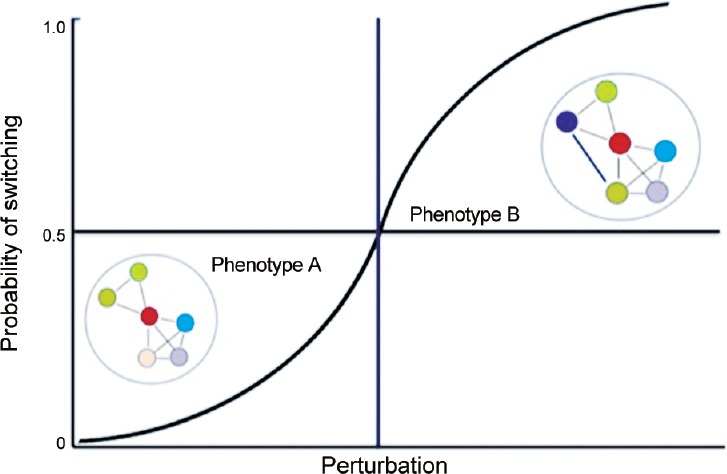Figure 4.

Schematic representation of phenotypic switching driven by noise in protein interaction networks. Phenotype A represents a normal cell that is characterized by a specific configuration of its protein interaction network (PIN). When subjected to perturbations, the levels of certain intrinsically disordered proteins (IDPs) increase and promote promiscuous interactions to rewire the PIN. If the new configurations of the rewired PIN remain within the threshold characteristic of phenotype A, this phenotype is retained notwithstanding minor fluctuations in the network topology. However, if the search unmasks latent PIN configurations that cross the threshold, the cell transitions to a cancer cell represented by phenotype B. Each cell has the same probability of switching to phenotype B, and once the perturbation exceeds a threshold (vertical line), the majority of cells in the population will be in phenotype B.
